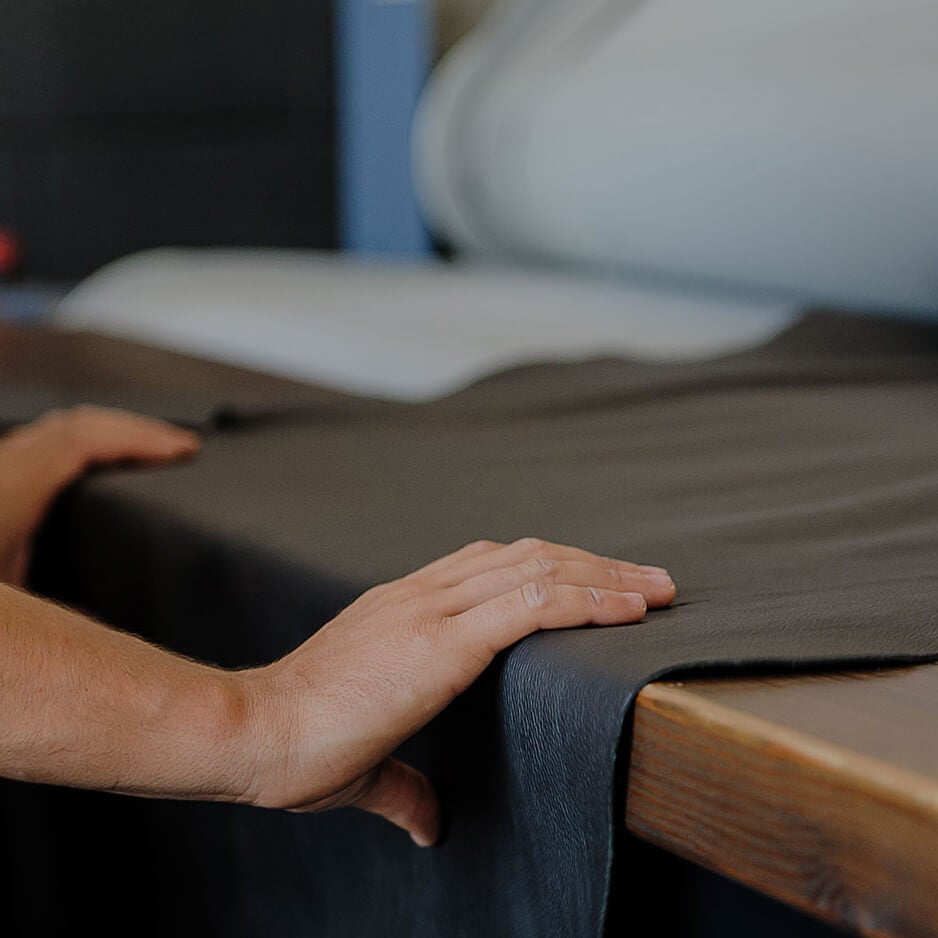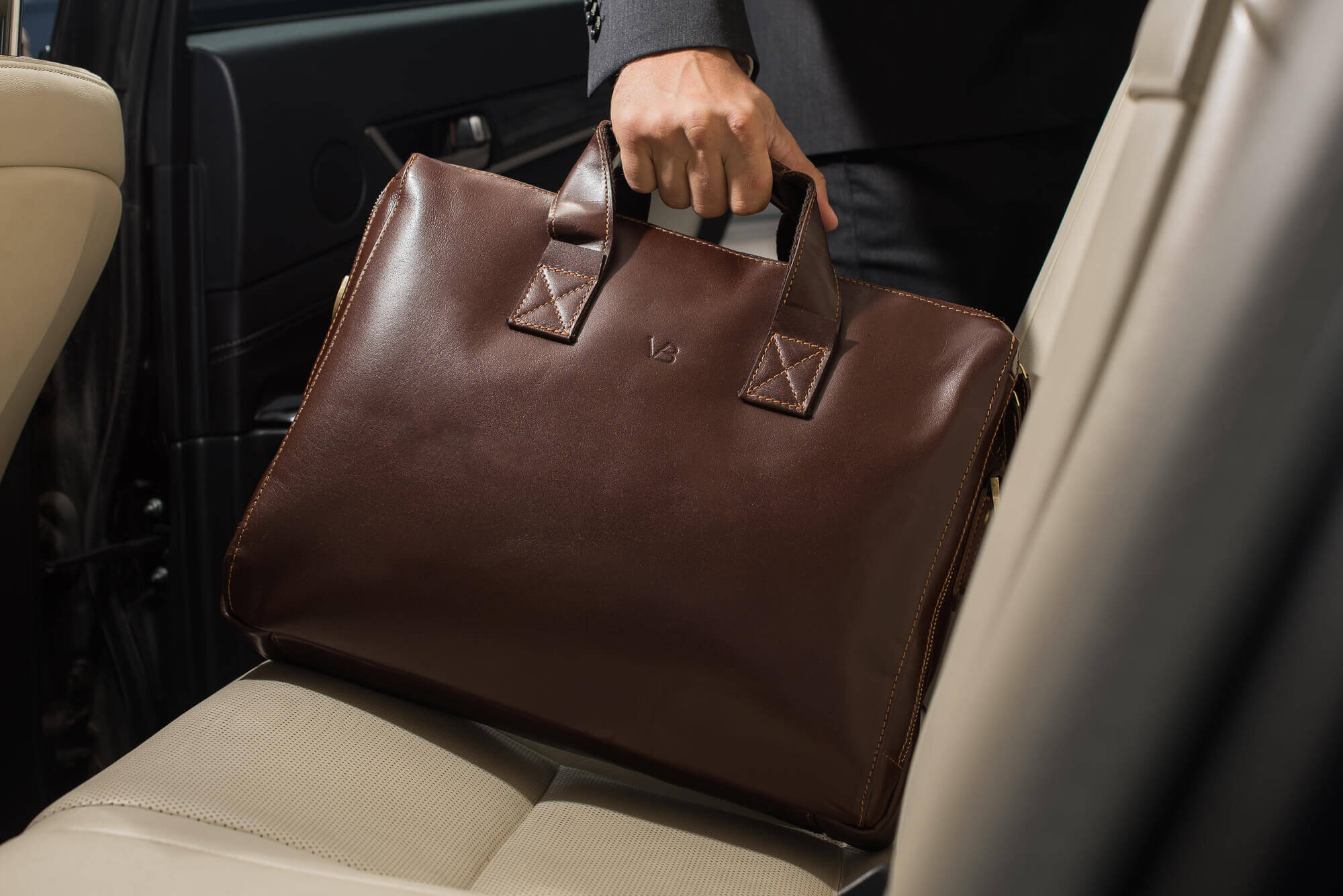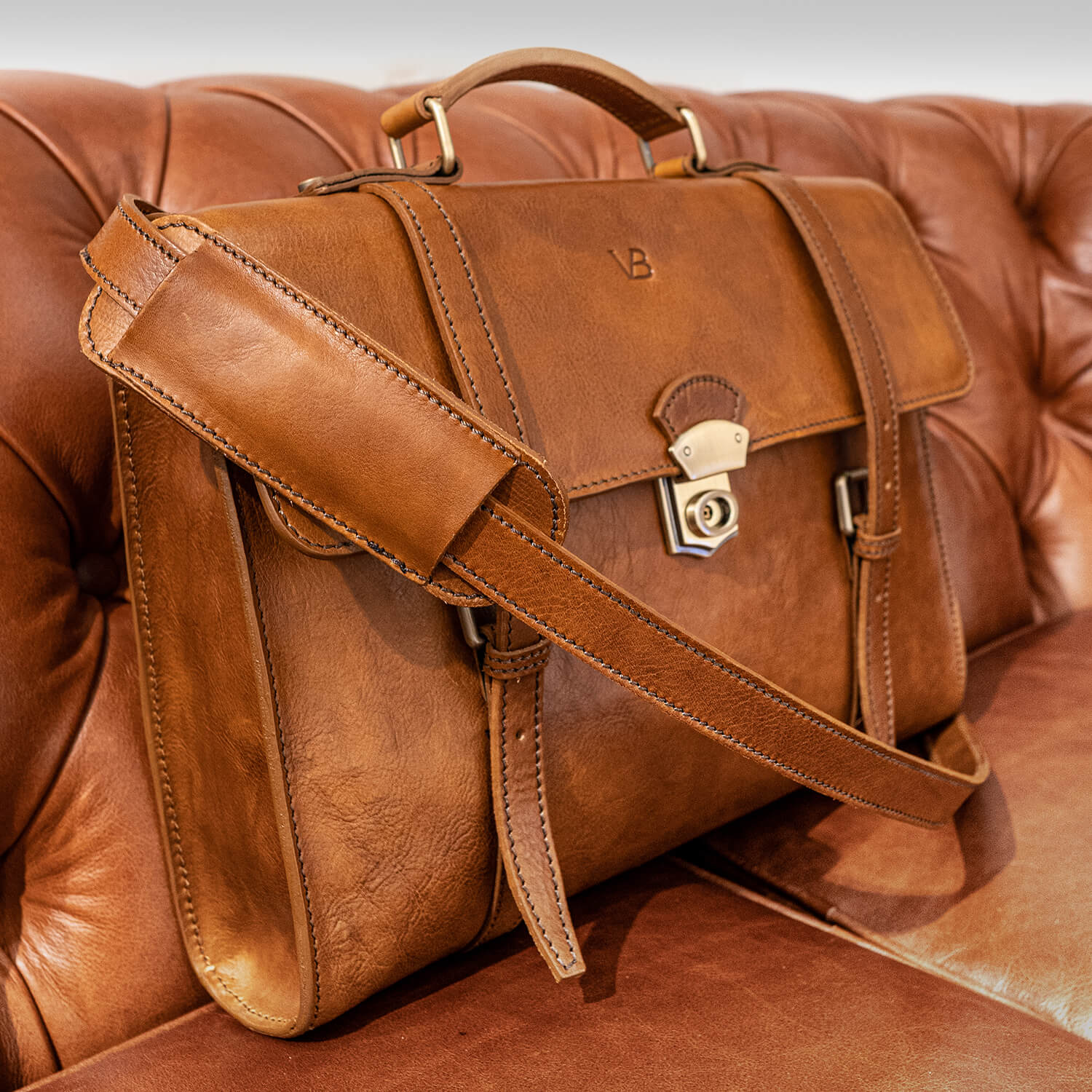
Vegetable tanned leather is a top choice of leather enthusiasts and craftspeople alike… and for good reason.
What is Vegetable Tanned Leather?
Vegetable tanned leather makes up about 10% of all leather in use today. The process uses natural vegetable tannins to change the protein structure within the hide, changing it from a raw animal skin into leather. The organic substances applied in the process preserve, strengthen, and eve color the hide.
Tannins in leather – like those in wine – each have a distinct effect on the substance to which they are bonded. While grapes provide the tannins for wine though, vegetable tanning uses tannins from tree bark, leaves and roots (among others). Common trees used include the birch, catechu, chestnut, mimosa, oak, and willow.
Need a full grain vegetable tanned leather briefcase? Shop online here.
History of Tan Leather
As far as we know, tanning leather using this type of tannin source began around 5,000 years ago in Sumer – modern-day Iraq and Kuwait. Tanners soaked the skins in water filled with the leaves and bark of mimosa trees. The leather was used for clothing and making bags.
The early processes were improved by later peoples, like the ancient Egyptians and Babylonians, but the Romans really upped the ante by industrializing the processes into large-scale production. Tuscan craftspeople then developed excellent leather sandals and the region is still known for leather crafts even today.

How is Vegetable Tanned Leather Made?
There are six main steps to the process of vegetable tanning:
- Curing: animal hides are salted, which prevents rot-causing bacteria from growing on them
- Liming: the hides are soaked in milk of lime, which removes hair and fat residues
- De-liming: this lowers each hide’s pH level by soaking them in another chemical solution
- Tanning: the hides are moved between different drums filled with tanning solutions of varying concentrations over the course of 30-60 days
- Drying: the hides are removed from the drums and dried for two to four days
- Treatment: the resulting leather is then oiled, stretched, trimmed and measured. Various finishing treatments can also be applied, depending on how the leather is going to be used.
Need a new vegetable tanned leather laptop bag? Browse our range here.
Pre-tanning
Today, many hides used for leather production are byproducts of the meat industry. The hides are cured as soon as they arrive at the tannery, to prevent bacterial growth and deterioration of the hide itself. Next, any residual wool, hair and fat are removed using a process called “liming.” The hides are soaked in huge drums, which turn constantly, and are filled with natural chemicals such as calcium hydroxide, also known as milk of lime.
Once the hides are limed, their pH is lowered again by rehydrating (sometimes called de-liming) in more large, rotating drums with different checmicals in them.
Tanning
The prepped hides are then placed in yet more drums, this time filled with tanning agents and water. The formulas used for this stage are almost as varied as the tanneries that use them, each with a slightly different combination of tannins in the solution. The tannin blends are manipulated by master tanners to produce different effects on different leathers, resulting in differing colors, strengths and feels of the finished product.
The hides are moved from drums of lower concentrations of tantric acid, to others with higher levels, over the period of about a month, absorbing more vegetable tanning agents as they progress, and taking on new physical properties as they go.
Treatment
The hides are lubricated with a blend of conditioning oils and waxes and set out to dry after the tanning is complete. The lubrication is necessary, as the fats have been removed and the hides would otherwise get dry and crack more easily in the future, but the precaution also improves the color concentration and durability of the item.
Once oiled, the leather is stretched, trimmed and measured. Depending on the desired finish, it can then be subtly refined further.
Benefits of Vegetable Tanned Leather
Vegetable tanned leather is considered the benchmark of the industry due to its strength and durability. If well cared-for it can last more than a lifetime. There are other reasons, however, that it is so popular.
One subtle attribute is the smell. It gives off a sweet aroma like nothing else – it’s that “leather smell” that is at once wholesome and luxurious.
Need a new vegetable tanned leather travel bag? We have those too!
Another trait of this leather is that the colors are richer and deeper than those of other leathers. The beiges and browns of this leather look natural and yet go well as an accessory to a wide variety of looks – or they can be the star of the show.
No synthetic coatings on this leather means that the surface can breathe, absorb moisture and oils, and take on a distinct patina over time that gives it a special value even when it has seen many years or miles of wear… sometimes especially then.
Last, but certainly not least, vegetable tanning is the most environmentally friendly way to produce leather. More on that below.
Did you know that all JUNYUAN bags are made from vegetable tanned leather?

Disadvantages of Vegetable Tanned Leather
Vegetable leather weighs way more heavily on the pros side than the cons, but there are still a few cons. One is that it tends to be more expensive. It takes longer to make than other types: up to two months, compared to chrome tanning, for example, that can often be done in a single day. It also has better color and lasts much longer. You’ll get value for your money, that’s for sure, but it will be a little more money that cheaper, lower-quality options.
When you first get a vegetable leather item, it can feel stiff, but don’t worry, it gets softer and suppler over time.
Remember too that vegetable leather, in an untreated state, is more susceptible to water damage.
Vegetable vs Chrome Tanning
Around 90% of leather is chrome tanned. The method was invented in 1858 alongside huge demands for fast production of leather tools and products during the Industrial Revolution. Chromium sulphate, along with other chemicals, is used to tan the hide. The process is largely automated, much quicker, and therefore much cheaper than vegetable tanning leather.
The pros of chrome tanned leather is that it is easily dyed in a wide variety of colors. It is also thinner, softer, and more resistant to heat and water.
It doesn’t last as long, however, and is prone to cracking or even separation of layers. It also doesn’t gain a patina in the same way as vegetable tanned leather. It also doesn’t have that great leather smell.
Perhaps the strongest con is that chrome tanning is not very environmentally friendly. Chrome tanning produces a lot of chemical byproducts, many of which are illegally (or legally) dumped into fragile eco-areas, especially in developing countries with little regulation over bigger industries. Chromium and lead are the main chemicals dumped, and these leech into the ecosystem and can cause considerable damage to plants and animals (including people). Some less harmful chrome tanning methods are being developed, but we are still some way from them measuring up to vegetable tanning for lower environmental impact.
Many of us today make purchasing choices not only for the attributes of a finished product, but also based on the manufacturing methods and waste of the entire process. It is true that vegetable tanning uses a lot of water, which is not ideal, but there are other factors to consider too. Using hides that are byproducts of the meat industry, using organic tanning materials, and buying an item that will really last a long time – each of these is worth considering when you choose your leather items.
Did you know we also stock vegetable tanned leather wash bags? Browse them here.
Conclusion
All in all, vegetable tanned leather comes out the clear winner. From environmental safety to longevity of the product, to its desirable features of smell, color and patina, vegetable tanned leather is very much worth the higher cost – in the long run, it will save you money and provide you with a better-quality product.
If all of these facts haven’t convinced you, just compare a cheaper, chrome tanned item to a fine product made of high-quality leather. Feel the vegetable tanned leather under your fingertips. Smell it. Try it on. Consider that it will last longer than you will, with a little care. Check out the cracks in an older chrome tanned item and the fine patina in a seasoned vegetable tanned one.
We think we know which item you’ll spend your hard-earned money on.
Next read the best modern briefcases for men.
We also have an excellent leather guide for beginners here.
Ten articles before and after
What Happens When Leather Gets Wet & How to Fix It – JUNYUAN Bags | Professional Bag Manufacturer
Best Large Wallets for Lots of Cash or Cards – JUNYUAN Bags | Professional Bag Manufacturer




 Mobile/What's App/Wechat
Mobile/What's App/Wechat E-Mail
E-Mail ADD
ADD




